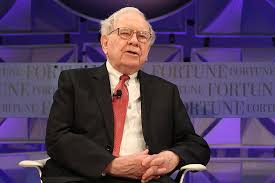The Obscure Investments That Paid Off Big for Warren Buffett—and How They Could Work For You

Warren Buffett often gets investment opportunities that mere mortals can’t attain. Still, sophisticated investors could have picked up a few pointers earlier this year, when Buffett cashed in $ 5 billion worth of Bank of America preferred shares.
In 2011, when Bank of America was struggling under the weight of problems related to the financial crisis, Buffett stepped up to help it with a $ 5 billion cash infusion. But his holding company, Berkshire Hathaway, took the stake in preferred stock. Preferred shareholders, earn a bond-like dividend—often, though not always, a higher dividend than owners of “common” stock can get.
Indeed, Berkshire brk.a earned a 6% dividend—worth approximately $ 300 million a year—for the six years it held onto its BofA preferred shares. At the time, the Federal Reserve prevented the bank from paying even a much smaller dividend to its regular shareholders (in the wake of the crisis, the central bank was generally restricting banks’ dividends). Berkshire’s 6% also dwarfs the 1.26% yield investors receive today.
Of course, Buffett invests on a different playing field. But that doesn’t mean preferred shares can’t provide your portfolio with an income boost. It’s just of question of whether they’re worth it—since they have some disadvantages compared to either stocks or bonds.
“Preferreds” have definitely enjoyed a renaissance since the financial crisis. With interest rates at measly lows, investors looking for income turned away from savings accounts and bonds toward other sources of income. Dividend stocks have been one hot option (the S&P 500 High Dividend Index has risen 11% annually over the past five years). Preferred shares are another: These tools have the reputation of being a hybrid investment, with “characteristics of both bonds and stocks,” says Collin Martin, director of fixed income at the Charles Schwab Center for Financial Research.
Similar to bonds, preferred shares have a yield, which the company pays in the form of a dividend. They usually have a face-value “par” price, like a bond, and the dividend is typically a fixed percentage of that price. As with common stocks, the ability to pay that dividend may depend on the company’s performance.
The pros and cons of yield
The differences between preferred and common stock, however, can be more important than the similarities. Unlike with common stocks and most bonds, the company can typically buy preferred shares back at face value whenever it wants. If you bought the share at a premium to its par value, then you would absorb the difference as a loss. And preferred shares generally don’t track the ups and downs of common shares . If a company’s common stock doubles, for example, the preferred shareholder may see little or none of the appreciation, says Carol Hoffman, a financial adviser at Clear Perspectives Financial Planning, near Cincinnati.
So why do investors bother with preferred shares? It all comes down to the yield. The iShares U.S. Preferred Stock ETF, which has $ 18 billion in net assets, has a 12-month trailing yield of 5.7%. That’s far more appealing than the 2.9% yield on a 30-year Treasury bond or even the 4.1% yield from the S&P 500 High Dividend Index. Preferred shares also offer a little bit of protection to investors who want to gamble on a risky company: In bankruptcy or liquidation, in the hierarchy of payments to shareholders, companies pay bondholders first, preferred share dividends second, and common stock dividends third.
Investing in preferred shares largely means investing in financials. Banks and other financial companies like to use preferred shares to meet capital requirements levied by the Federal Reserve; preferred issues allow them to avoid loading their balance sheets with debt, and they also raise money without diluting the ownership rights of common shareholders. In the iShares ETF, 60% of the holdings are in the financial sector. “It’s really dominated by financial institutions,” says Martin. Of course, that played poorly in the crisis of 2008, when banks imploded and the value of the preferred shares ETF fell by 63%.
It’s fun to drive a convertible
Buffett’s investment in Bank of America stands out for another reason. The Oracle of Omaha had the option to convert the preferred shares into common ones at a price of $ 7.14 per share, roughly where BofA bac traded when he made the deal. Buffett pulled the trigger on the conversion this summer, when Bank of America shares stood at just above $ 23. The deal netted Berkshire around $ 13 billion in gains on paper.
They aren’t always easy to find, but “convertible” preferred shares offer that protection to investors: They can enable sharp-eyed investors to essentially give up their yield in order to cash in on a common stock’s market gains.
Hoffman, the Cincinnati adviser, generally doesn’t recommend using preferred shares. But she has seen some of her clients benefit from them through their retirement plans, thanks to a convertible option. In 1989, Cincinnati-based Procter & Gamble funded an employee stock ownership plan that provided employees with company stock, including a chunk of preferred shares.
When those employees leave P&G, Hoffman explains, they can convert these to common shares in an IRA. They get to use the original value—$ 6.82 a share—as their tax basis for calculating gains. So in essence, the retiree can then sell the shares, paying income tax on the proceeds up to $ 6.82 a share and the lower capital gains tax—up to 15%—on the rest of the share price.
That’s no small windfall, since the stock pg has recently traded in the mid-$ 80s. It’s a far cry from the upside Buffett realized, of course, but it’s still a nice perk.


